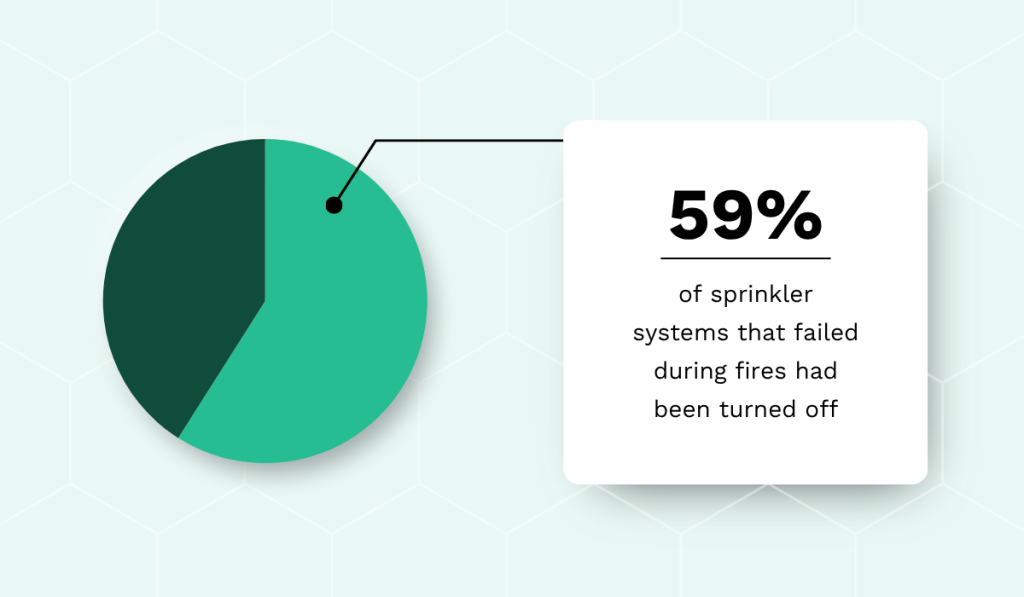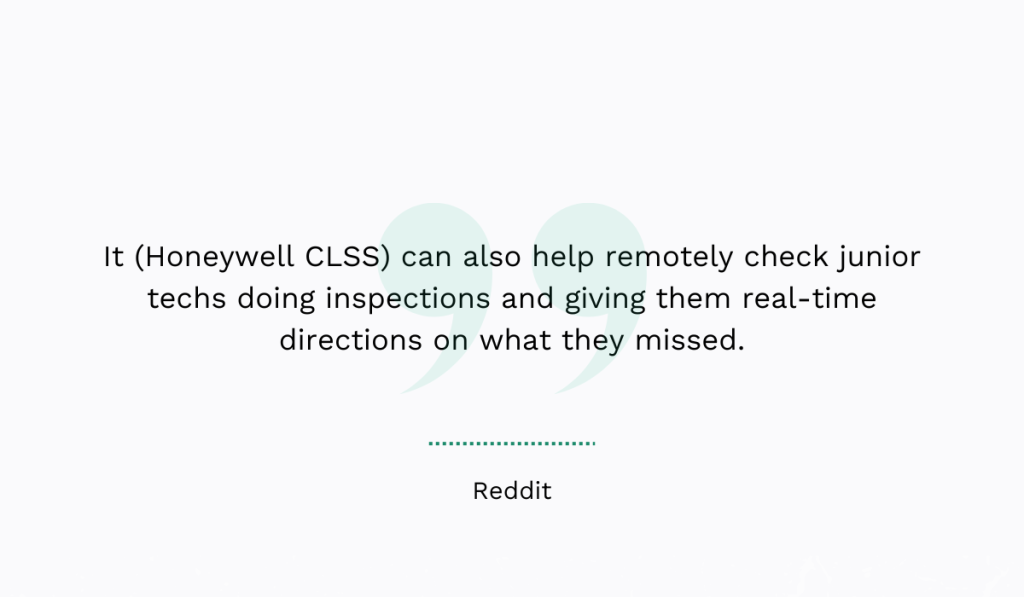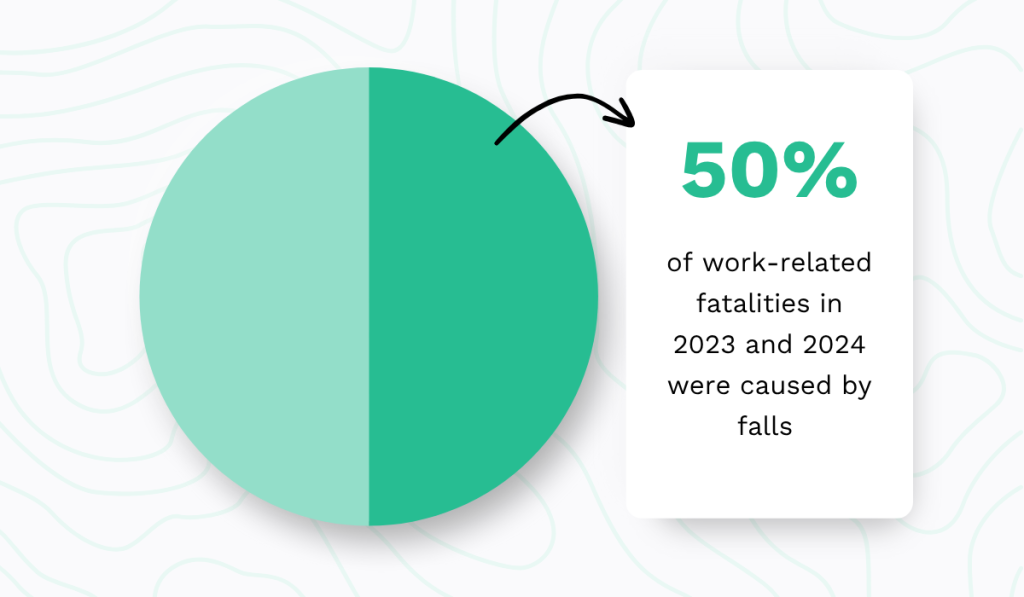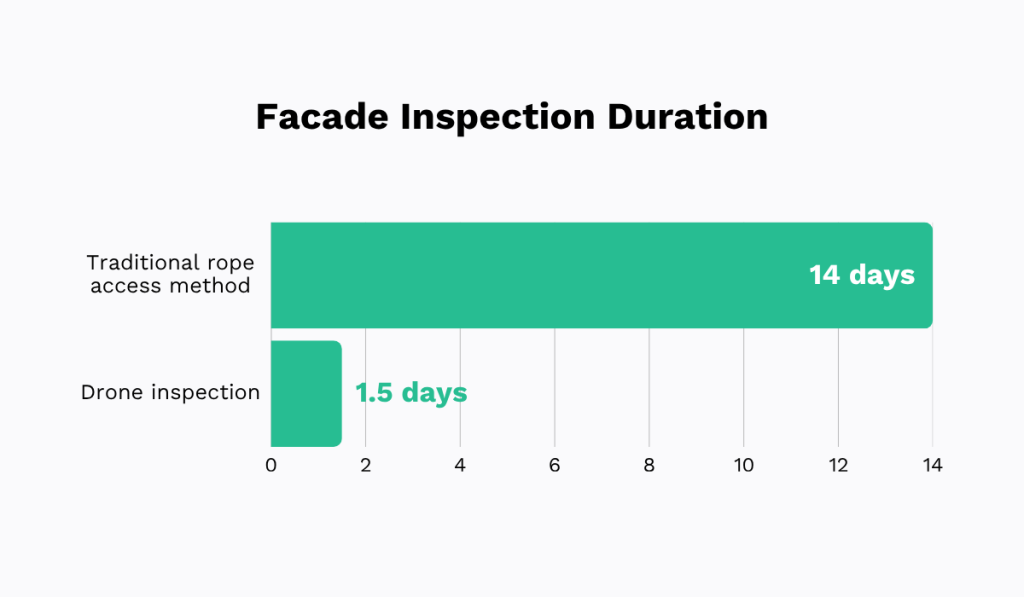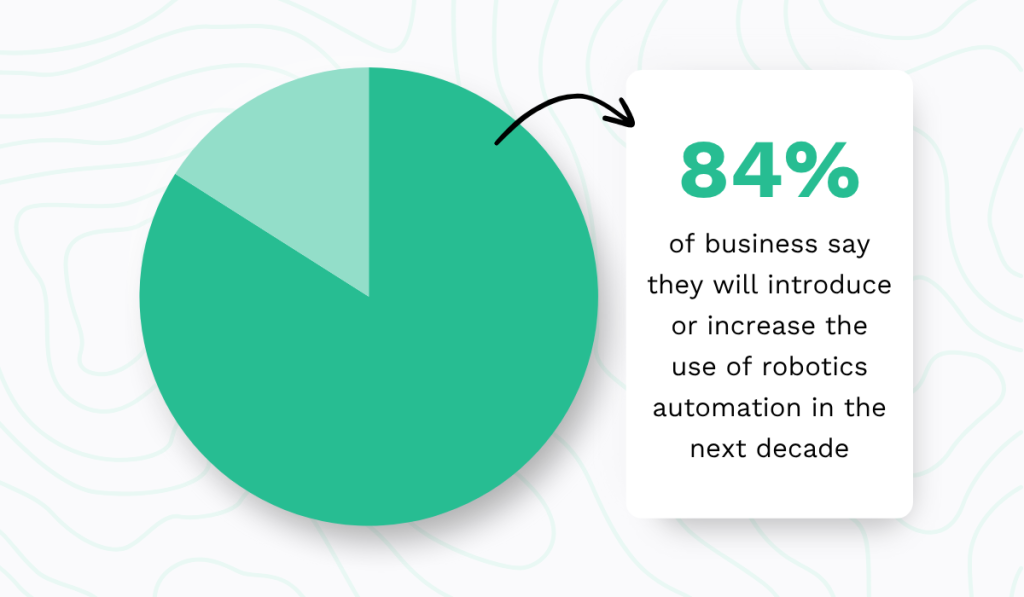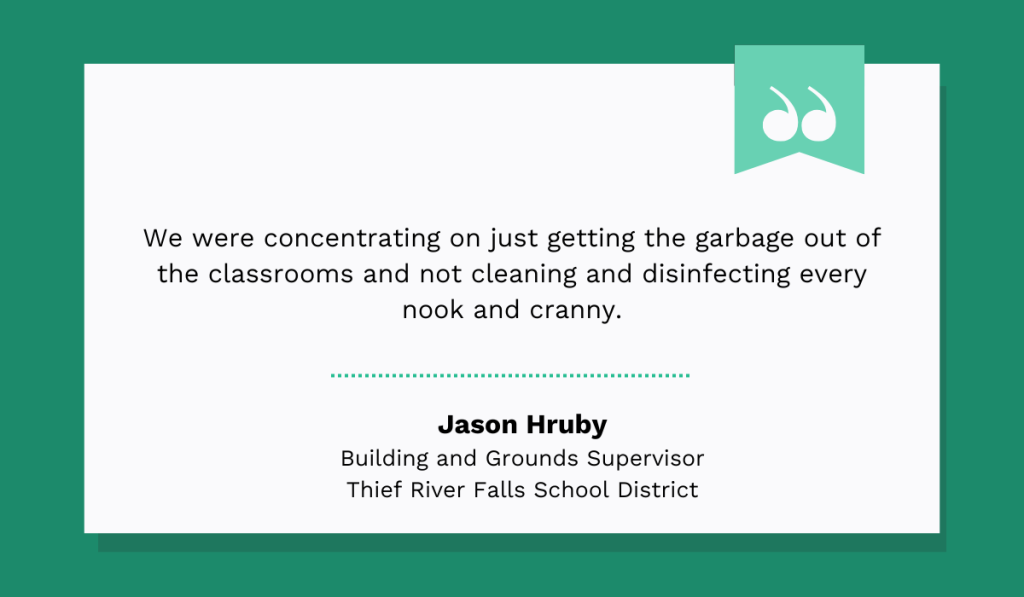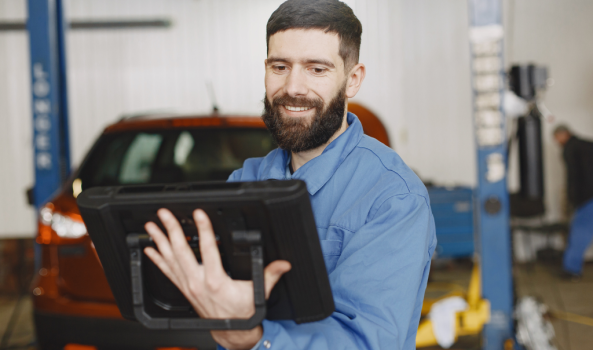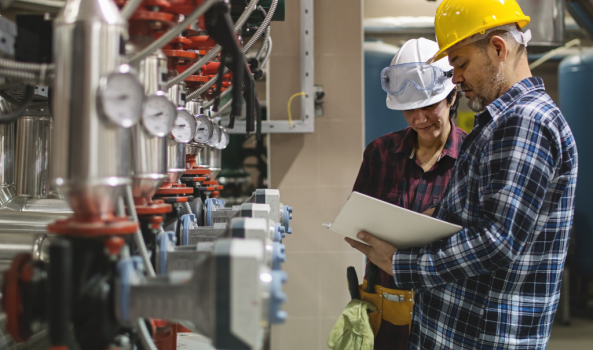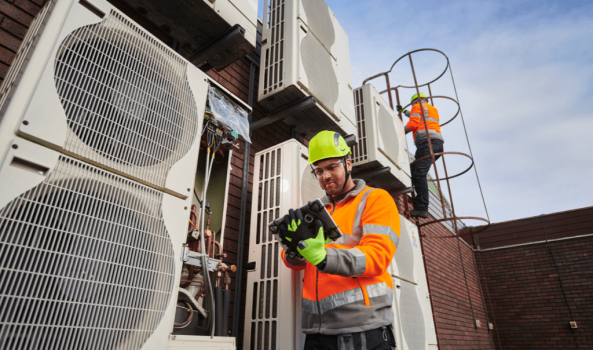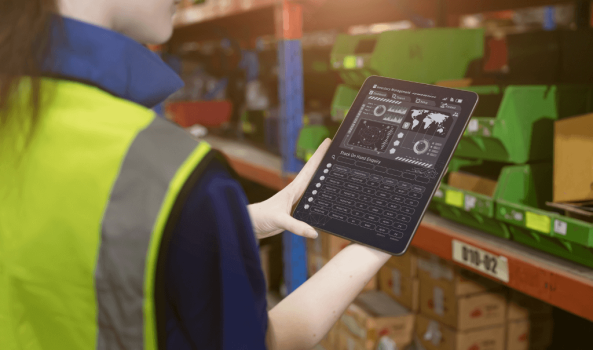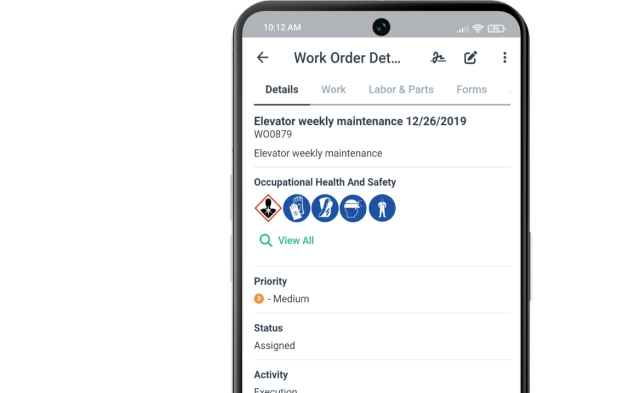Get a Free WorkTrek Demo
Let's show you how WorkTrek can help you optimize your maintenance operation.
Try for freeKey Takeaways:
- Automation improves accuracy and efficiency in building maintenance tasks.
- HVAC monitoring benefits from remote control and predictive alerts.
- Leak detection sensors reduce water damage and waste.
- Drones enable faster and safer roof and façade inspections.
- By 2025, 84% of businesses plan to expand their use of robotic automation.
Many building maintenance tasks are repetitive, time-sensitive, and resource-intensive.
However, automating them can significantly reduce manual workload, improve task accuracy, and ensure timely intervention.
From HVAC upkeep to floor cleaning, automation is transforming how facility teams operate.
It improves consistency, minimizes delays, and enables staff to focus on more complex responsibilities.
This article outlines six key building maintenance procedures that benefit most from automation.
It also highlights how modern tools, ranging from cloud-based software to robotics, are delivering measurable results in building maintenance.
HVAC Systems Monitoring
Heating, ventilation, and air conditioning (HVAC) systems are among the most critical and energy-demanding components of any building.
When they malfunction, issues such as uneven airflow, unexpected noise, or unstable temperatures can affect comfort and productivity almost immediately.
Traditionally, HVAC maintenance involves:
- The staff adjusting controls manually
- Visiting multiple locations to troubleshoot
- Relying on multi-step inspections
Delays in part orders, unclear fault origins, and a lack of consumption data often prolong resolution times and drive up costs.
These challenges were familiar to the maintenance team at Rockpool Songbird Oxley, an aged care facility managed by Rockpool Residential Care.
To improve HVAC control and response times, they partnered with NRG Services to implement a smart automation system.
Using CoolAutomation’s smart gateways, NRG connected the facility’s entire HVAC network to a centralized, cloud-based Predictive Maintenance Suite.
The new system enables staff to remotely control HVAC units via desktop or mobile devices, and malfunctions now trigger automatic alerts, allowing for faster interventions.
The suite’s energy monitoring tools also provide insights down to the level of individual indoor units.
Facility managers receive routine reports on inefficiencies, which helps them identify wasteful usage patterns and set operational rules based on actual needs.
Below is a summary of the benefits Rockpool Songbird Oxley now experiences:
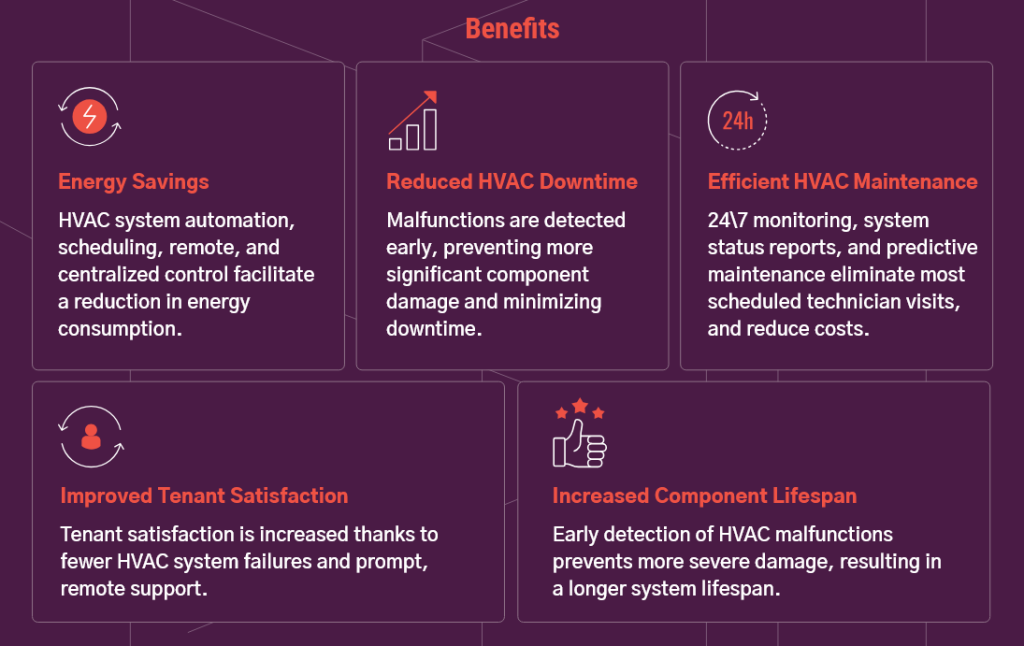
In other facilities, automation may begin with less complex tools.
Computerized Maintenance Management Systems (CMMS) are often the first choice.
These platforms automate routine maintenance scheduling, track service history, and centralize task assignment.
With a CMMS like WorkTrek, teams can automate time-based or meter-based maintenance, assign tasks to technicians, and maintain full maintenance records in one place.
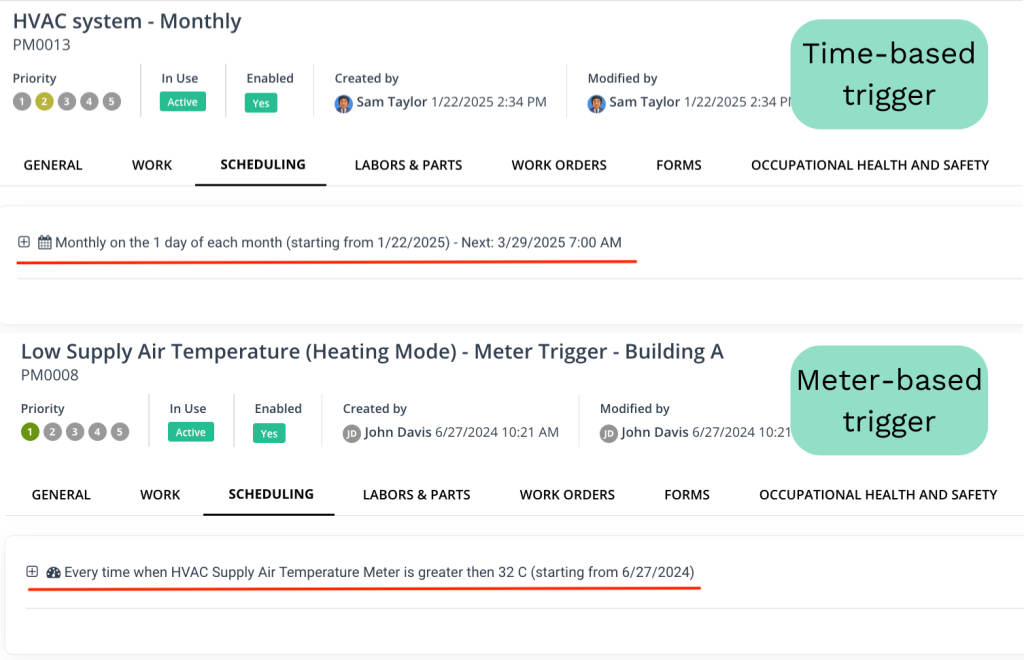
On the other hand, residents or building users can also submit maintenance requests via a mobile app, a request portal, or a branded mobile platform, like in the example below.
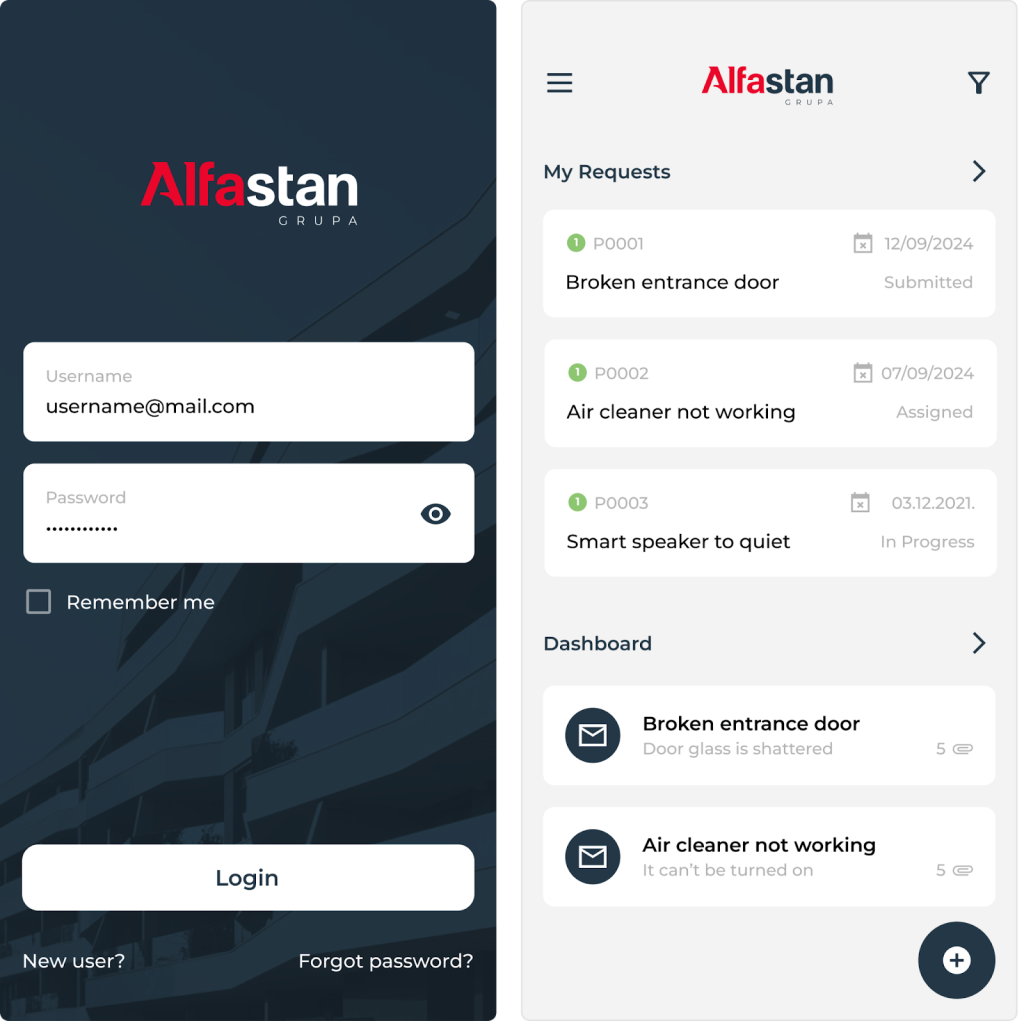
This ensures issues like poor airflow or inconsistent heating are reported and resolved faster.
Tomislav Matković, Maintenance Manager at TRIUS, an organization focused on leasing and managing its own and rented properties, uses WorkTrek precisely for this:
“We use WorkTrek to help us maintain our building. Before the app, our staff would often be overwhelmed with calls and messages from our tenants, often leading to missed work.”
Now, maintenance requests are submitted through the app and immediately converted into structured work orders.
Managers can attach instructions, assign tasks, and set priorities.

Meanwhile, technicians access everything through their phones, clock in, follow directions, and close work orders upon completion.
By combining automated system monitoring with streamlined communication, maintenance teams can improve HVAC reliability, reduce downtime, and extend equipment lifespan, all while enhancing tenant satisfaction.
Plumbing and Water Leak Detection
Leaks and water damage can escalate quickly and often go unnoticed until significant damage has already occurred.
According to Moen, water damage in buildings is eight times more common than fire, underscoring the importance of early detection and rapid response.
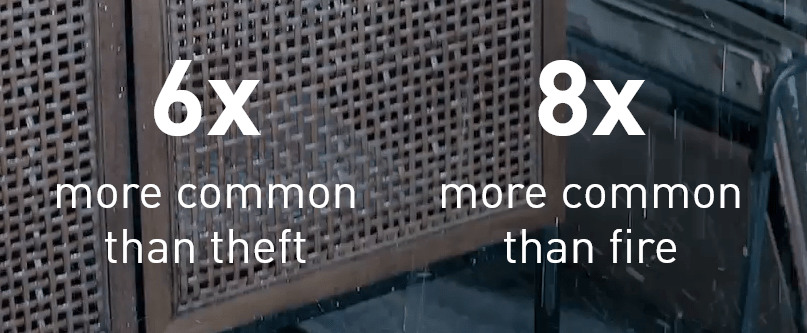
Automated leak detection systems address this by using smart sensors placed near high-risk areas such as pipes, water heaters, and mechanical rooms.
These sensors track changes in moisture or water flow and trigger instant alerts when anomalies are detected.
Some systems, like Phyn, take it a step further by using high-definition pressure sensors and AI-driven analysis to monitor water usage patterns and automatically shut off the main water valve in the event of a serious leak.
As Ryan Kim, CEO and Lead Engineer of Phyn, explains:
“What makes me proudest about Phyn Plus is its ability to go beyond just detection—it learns and automatically takes action when it matters most. In the event of a catastrophic leak, it can shut off the water in seconds, preventing costly damage before it starts.”
While primarily marketed to homeowners, the underlying technology—real-time detection, automated response, and remote control—is also increasingly relevant for larger residential and commercial properties.
For facility managers, these systems offer more than just damage prevention.
Real-time alerts sent via mobile apps enable faster response, while collected usage data helps teams detect inefficiencies, reduce waste, and plan maintenance proactively.
Even simple setups can make a meaningful difference.
One Reddit user described how placing leak sensors on the floor near air handlers in mechanical rooms helped their team prevent two major floods.

In another example, maintenance staff were notified via email when moisture was detected in a vacant unit, enabling a timely intervention before further damage occurred.

It’s clear that incorporating automated leak detection into plumbing maintenance procedures protects properties.
But beyond that, it supports sustainable maintenance by minimizing water waste and reducing the need for emergency repairs.
Fire Safety System Testing
Fire protection systems, including sprinklers, alarms, extinguishers, and emergency lighting, must be regularly inspected and maintained to remain effective.
However, many failures are caused by avoidable oversights.
According to the National Fire Protection Association (NFPA), 59% of sprinkler systems that failed during fires had simply been turned off.
Automation helps eliminate these risks by ensuring systems are continuously monitored, properly maintained, and operational.
Smart fire safety platforms, such as Honeywell’s Connected Life Safety Services (CLSS), integrate IoT sensors and smart control panels to track system health in real time.
These platforms can run self-diagnostics, detect low batteries or faults, and generate alerts when systems fall out of compliance.
They also maintain digital logs of inspections, which improves documentation and reduces the risk of human error during manual checks.
As one technician noted on Reddit, CLSS can also assist less experienced staff during inspections by enabling remote supervisors to verify their work in real time and provide immediate guidance:
AI can also flag overdue maintenance, detect blocked exits, or recommend service based on usage patterns, thereby reducing manual error and improving safety.
By automating key aspects of fire safety maintenance, facility teams can ensure greater compliance, reduce the risk of oversight, and maintain higher levels of occupant safety.
Elevator and Escalator Checks
Elevators and escalators are mission-critical assets in most buildings, especially in high-rises, hospitals, and public facilities.
When maintenance is neglected, the consequences can be severe.
In one tragic example from 2011, a woman died in a New York elevator accident after the system abruptly moved with its doors still open.

An investigation found that maintenance workers had bypassed the door safety circuit using a jumper wire and failed to follow basic safety protocols, including alerting the city to a reinspection before putting the elevator back into service.
The incident underscored how poor or rushed maintenance can lead to fatal outcomes.
Unfortunately, this case is not an isolated incident.
Across industries and geographies, elevator accidents often stem from skipped inspections, overdue part replacements, or overlooked system faults—all of which can be prevented with proper monitoring and maintenance.

Traditionally, elevator maintenance has been conducted according to fixed schedules based on calendar intervals, regardless of actual usage.
However, this approach can lead to both over-servicing and missed failure risks.
Today, automation is enabling a smarter, usage-based model.
IoT sensors installed in elevator systems now track metrics like door cycles, vibration levels, motor current, and braking patterns.
These data points are analyzed in real time by AI-powered platforms to detect unusual wear or performance degradation.
As a result, teams can identify components approaching failure and schedule maintenance proactively.
One example is N2 Infotech, which recently launched an AI-driven predictive maintenance system explicitly designed for elevators.
Boeun Nam, CTO of N2 Infotech, explains:
“In the past, there was no way to measure elevator usage quantitatively, so maintenance schedules mostly relied on engineer experience and intuition. With our system, we overcome these limitations using sensors and AI analysis to enable more systematic and precise maintenance.”
This shift from intuition to data-backed decision-making leads to fewer unnecessary service visits, lower maintenance costs, and, most importantly, enhanced passenger safety.
These predictive platforms can also integrate with CMMS software, automatically generating tasks based on actual usage data and eliminating the need for manual tracking or paper logs.
As a result, maintenance teams gain clearer visibility into asset health and can prioritize their work based on actual risk, rather than just routine.
Ultimately, automated elevator and escalator monitoring creates more efficient workflows, helps prevent downtime, and ensures that safety standards are consistently met.
Roof and Facade Inspections
Inspecting roofs, gutters, and building facades is a vital part of building maintenance.
These checks help identify early signs of wear—such as cracks, clogged drainage, water damage, or material degradation—before they escalate into costly repairs or structural issues.
Traditionally, however, these inspections are time-consuming, expensive, and often risky.
They typically require scaffolding, aerial lifts, or rope-access technicians, especially for high-rise or complex structures.

Depending on the building’s size and layout, a full inspection might take several days.
The cost of equipment is high, and the safety risk is even higher, as working at height remains one of the leading causes of injuries and fatalities across industries.
In construction, for example, 50% of work-related fatalities in 2023 and 2024 were caused by falls from height.
Automated drone inspections are changing that.
Equipped with high-resolution cameras and thermal imaging, drones can capture detailed visuals of rooftops and facades quickly, safely, and without disrupting daily operations.
This reduces both the time and risk associated with traditional inspections, while delivering more comprehensive data.
For example, in Chesterfield County, Virginia, a drone was used to inspect the roof of a fire station.
It captured 268 images in a single session and identified seven significant defects that had gone unnoticed in prior inspections.
With this information, the maintenance team was able to intervene early, potentially extending the roof’s lifespan by up to 10 years.
In another case from Australia, a large commercial building’s facade was inspected via drone in just 1.5 days, a task that would have taken up to two weeks with rope-access teams.
Obstacle avoidance sensors helped the drone maintain a consistent flight path, capturing each square meter in 3–4 images.
The result was not only higher image clarity, but also a faster and more efficient desktop review process.

By automating roof and facade inspections, facilities teams gain quicker access to actionable insights, reduce downtime, and eliminate many of the risks associated with working at height.
The data also supports more accurate reporting, long-term planning, and capital budgeting, making drones an increasingly valuable asset in modern maintenance strategies.
Floor Cleaning and Disinfection
Cleaning may not be the most glamorous aspect of building maintenance, but it’s essential for safety, hygiene, and occupant satisfaction, particularly in large commercial, healthcare, or educational facilities.
Traditionally handled by janitorial staff, cleaning is a time-consuming and labor-intensive task, often scheduled after hours to avoid disrupting operations.
As staff shortages and cost pressures grow, automating this routine task has become a priority.
According to ABB’s 2025 survey, 84% of businesses plan to expand robotic automation, and floor cleaning is one of the clearest areas of opportunity.
Autonomous cleaning robots such as the Avidbots Neo and SoftBank Robotics’ Whiz are already being used in offices, airports, hospitals, and schools.
They can map and navigate large spaces, avoid obstacles, disinfect high-touch surfaces, and record when and where cleaning took place, improving both efficiency and accountability.
For the Thief River Falls School District in Minnesota, automation became a necessity.
Ongoing labor shortages had reduced a once 30-person janitorial team to less than half its original size.
Naturally, that affected the quality of work, as Building and Grounds Supervisor Jason Hruby explains:
Administrators began to notice the decline, and extracurricular events turned into “all hands on deck” cleanups involving maintenance staff, teachers, and even students.
The tipping point was when only two staff members were available to clean 200,000 square feet overnight.
That’s when the district adopted the Avidbots Neo.
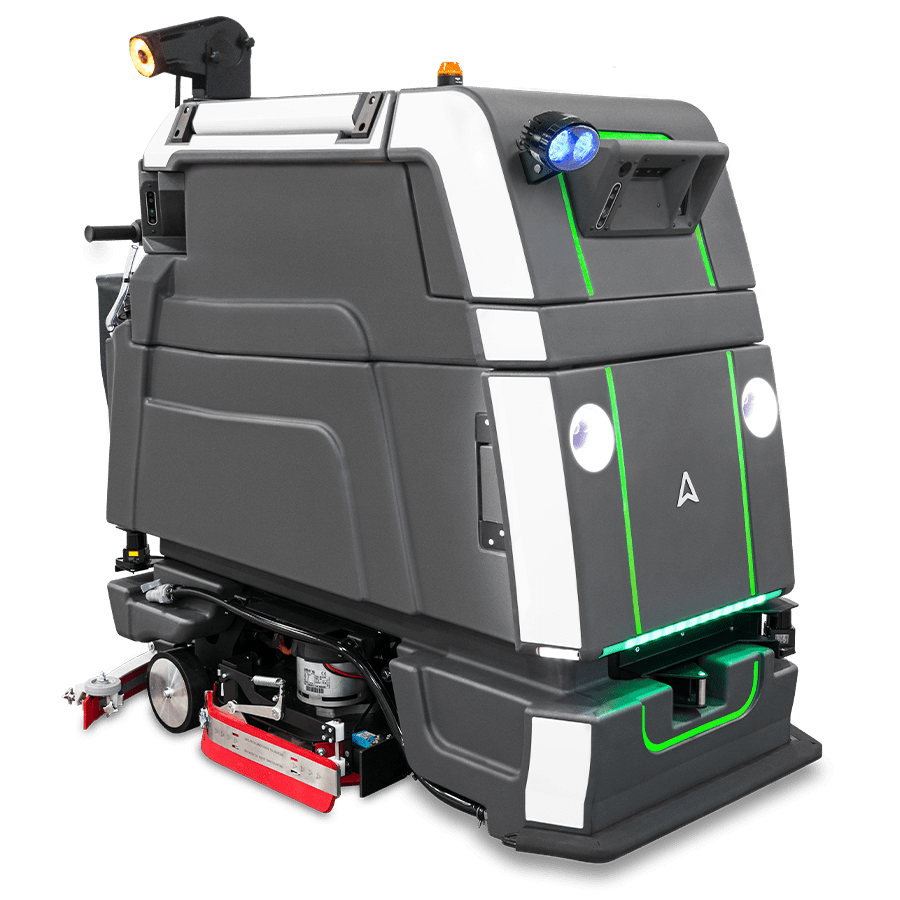
With support from Avidbots technicians, the facilities team configured Neo to suit the school’s layout and needs, mapping cleaning paths, setting no-go zones, and adjusting water flow and brush pressure for different floor types.
During the evening shift, Neo now handles surface disinfection and cleaning around lockers, trash bins, water fountains, and railings.
By automating routine cleaning and disinfection, the district regained control over hygiene standards and freed up limited staff to focus on more specialized tasks.
For facilities teams facing similar pressures, robotic floor cleaners offer a scalable, consistent, and data-driven solution to one of maintenance’s most foundational challenges.
Conclusion
Maintenance automation is transforming the way buildings are managed, enabling easier problem prevention, enhanced safety, and increased productivity with fewer resources.
From leak sensors to cleaning robots, today’s tools help facility teams stay ahead of issues instead of constantly reacting to them.
As buildings get smarter, so should maintenance.
Now’s the time to invest in technologies that make everyday tasks faster, safer, and more reliable.
A CMMS solution is the ideal starting point.




